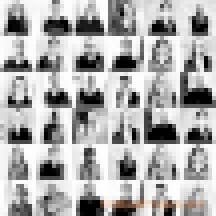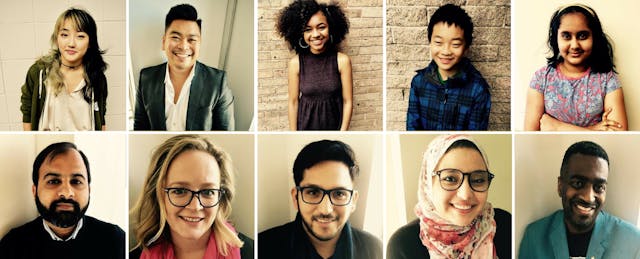For most of my teaching career, I was the only teacher of color in my building. I once expressed to the principal my hope that she would be considering teachers of color as candidates for an opening in our English department. “They just don’t apply,” she told me resolutely. I didn’t bring it up again.
I had also been closeted for most of my teaching career. While other teachers in the staff room talked about their husbands’ dentist appointments and anniversary plans, I ate my lunches strategically avoiding conversation about my personal life. During my fifth year of teaching, when I fell in love with the woman I am engaged to now, I stopped going to the staff room altogether.
When I left the classroom in 2017 for a job as an events curator for a community arts organization, it was the middle of spring semester during my seventh year as a teacher. I was a Washington State Teacher Leader and I had just become a TED-Ed Innovative Educator, which gave me an opportunity to join a cohort of international educators who were determined to find creative ways to enrich their school communities.
I was sick over the decision to abandon my classes of sixth graders and to walk away from former students who continued to stop by my classroom to tell me about their romances, anxieties and college applications. Of all my identities, teacher had been at the top of the list for so long, and now I was quitting.
Even so, I knew I had to leave. I was burned out after long feeling separated from my administration and colleagues and was craving community. Most importantly, I wanted to be somewhere where I didn’t feel like the only “something” in the room all the time.
Once my family moved to the mainland from Honolulu when I was in third grade, I don’t remember ever having any Asian or biracial teachers through elementary, middle or high school, or even in college or graduate school. Until I went to college, I never had an out gay or lesbian teacher who was open about their partner the way my other teachers shared about their spouses. Moreover, as a K-12 student, I rarely had teachers who seemed to be the kind of adult I wanted to become.
As a middle school humanities teacher, I saw myself in my students and they saw themselves in me, and we talked about it openly. Topics of race, nationality, class, gender and sexual orientation were all folded into my syllabus. When the district’s prescribed curriculum included only novels written by white male authors featuring white male protagonists, I supplemented with short stories, advertising campaigns and podcasts by youth of color, women and LGBTQ folks. We analyzed Beyoncé’s Formation video. We held Socratic seminars rooted in essays by Amy Tan and Daniel José Older. We performed poetry inspired by Saul Williams and Staceyann Chin.
So many of my students—kids of color, white kids, queer kids, straight kids—regularly expressed their excitement and gratitude over the many ways identity influenced our work together. They were eager to explore race and sexual orientation in the context of our safe and thoughtful class community. They had so many questions and stories to share on these topics. In fact, they seemed relieved that someone was finally asking.

Motivated by experiences from my own classroom, when TED-Ed invited our cohort to design yearlong innovation projects to address issues in our school communities, I knew exactly what I wanted to do: I wanted to hear from actual students and teachers in our schools experiencing culture gaps and heteronormativity, and I wanted to take their photographs. In addition to sharing their stories of living these culture gaps every day, I wanted people to show their faces to humanize the statistics and remind people that the diversity of our schools is rooted in the unique experiences of real individuals.
And so, for the last two years, I have been photographing students and teachers from around the world and asking them two questions:
- What do you have in common with your students/teachers?
- Does it matter that students and teachers have things in common?

The project, called ROLL CALL, is focused on humanizing the many gaps that separate students and teachers including race, gender and sexual orientation.
When I launched the project in 2016, I was baffled that the culture gaps in our schools weren’t inspiring protests in the streets. The gaps at this project’s launch are alive and well today: according to the U.S. Department of Education’s most recent survey, about 80 percent of all public school teachers are white. Meanwhile, a majority of public school students are kids of color according to government estimates.
In addition to this race gap, a familiar gender gap also persists in our schools: over 75% of American public school teachers are women, a statistic that doesn’t represent the student population. Statistics on sexual orientation among high school students are hard to come by, reflecting enduring (although waning) societal taboos surrounding queer identification. But a recent survey by the Centers for Disease Control and Prevention (CDC) showed that there are likely about 1.3 million high school students who identify as lesbian, gay or bisexual in the United States. Furthermore, several studies suggest that young people are more likely to identify as transgender than previously thought and are rejecting binaries of gender identification. However, LGBTQ teachers still consistently express discomfort and even fear over being publicly outed about their sexual orientation while working as educators.
I narrowed in on a few goals for this project: shrink the culture gaps, shine a light on the need to increase the number of teachers of color and male teachers in our schools and transform classrooms into inclusive—not just tolerant—spaces for LGBTQ students and teachers. This was an ambitious vision to be sure, but one I was desperate to believe in.
Even though I no longer have my own classroom, I bring ROLL CALL workshops into schools regularly. I still find that teachers are just as frustrated and challenged by the culture gaps in our schools as our students are. I’ve seen the same sense of relief fall over both students and teachers when they are finally invited to tell their stories, just as I’ve seen empathy fill classrooms full of both teachers and students after learning the stories of their peers.
Over the past two years, I have been deeply moved so many times by the stories that students and teachers have trusted ROLL CALL to share. However, there is one story that stands out, because it made ROLL CALL into what it is today. The transformative story is that of Washington State’s Regional Teacher of the Year Lynne Olmos, who was the first person featured in the project.
Like most teachers, Lynne is white, female and heterosexual. Many of Lynne’s students don’t share her race, gender or sexual orientation. However, in response to ROLL CALL’s first question: What do you have in common with your students?, Lynne shared:
“When I was the age that my students are now, I experienced abuse, neglect a broken family and extreme poverty. This helps me understand their motivations and behaviors.
Additionally, for a time as an adult, I was a homeless, unemployed, single parent on financial assistance. Generational poverty is something my students and I have in common.
My path to becoming an academic was unusual and later in life. I know what it is like to be an unmotivated student without future plan. I know that it is never too late to change your path.”
Lynne’s story not only reminded me of the extraordinary ways teachers bring love into their work, but it also showed me that ROLL CALL’s original mission was wrong.
I set out to fix a flawed system—to bridge cultural divides and urge our schools to be more welcoming for LGBTQ teachers and students. However, by focusing on this end goal, I was losing sight of the incredible work our students and teachers are doing to connect within our current system, despite its flaws. Now, thanks to Lynne and the hundreds of teachers and students who have shared their stories through the project, its mission has evolved into what it is today: not just to humanize data, but also to celebrate the profound connections happening in our schools despite these divides.
I look forward to the day when our population of teachers more closely reflects the identities of our students, but what I hope stays with people from the project is its undeniable evidence that our schools are filled with teachers and students determined to find empathy where it seems like it isn’t possible.
So if you’re looking for a way to connect across divides in your school community, you might consider starting your journey by asking the students and teachers in your life ROLL CALL’s two questions. You might be surprised where the answers take you.


